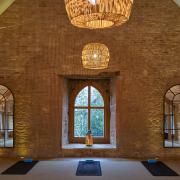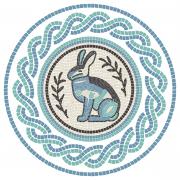The birthplace of Richard Whittington was first positively identified by a tenacious Victorian scholar, Rev. Samuel Lysons (1806-1877). He was Rector of Rodmarton, South Gloucestershire, and Canon of Gloucester Cathedral. His biography, The Model Merchant of the Middle Ages (1860), is a lively, although moralistic account of Mayor Whittington. He attempted to compile a pedigree of Whittington’s ancestors, a task hampered by the profusion of firstborn males bearing the name ‘William’. There is further confusion in that they had a propensity for marrying women called ‘Joan’.
Pauntley is a tranquil hamlet that lies in a loop of the River Leadon, ten miles north-west of Gloucester. It lies just north of the Forest of Dean, where coal and iron had been profitably mined since Roman times, on the borders of Herefordshire and Worcestershire. Probably, the name derives from ‘pent’ (valley) and ‘ley’ (meadow). Traditionally, this desirable arable land divided itself naturally into two parts: the upper parish, which is sandy soil, was planted with rye, and the lower part, that inclines to clay, with wheat. Today, although wheat and maize remain, the ryelands have been claimed by Cotswold sheep prized for their sweet flesh and fine wool. There are only remnants of cherry orchards, but an abundance of cider apple trees. Horned cattle graze and plump pigs forage on the rich red farmland. This countryside dips and swells, valleys and hills are crowned with oak and lime groves. Six centuries have hardly changed the landscape.

Walter de Laci, one of the noblemen who accompanied William the Conqueror to England in 1066, was rewarded for his loyalty with numerous manors, including Pauntley. His niece married Ansfrid de Cormeilles, who thus acquired as part of her dowry ‘Pantelie’. The extent of this desirable land was meticulously recorded in Domesday Book (1086). When their descendant Walter de Pauntley died in 1248, it was inherited by his daughter, Margery, who had married John de Solers (born c.1155). Thus, Pauntley came to the Solers family of Hope Solers (now ‘Solers Hope’), Herefordshire.
The village after which the Whittingtons were named has never been precisely identified, but one a mile south of Worcester is possible. The family emerges from the shadows with an elusive William Whittington I who lived 16 miles eastwards at Upton by Haseler, South Warwickshire. This attractive village, which retains a few medieval timbered cottages, is divided into two parts, with Upton below and Haseler above, with its later church situated dramatically on the hilltop. His son, William II, married Hawise, sister and heir of Hugh Aquillon, Lord of the Manor of Upton between Stratford-upon-Avon and Alcester. These early Whittingtons must have been wealthy farmers or merchants to have secured this prestigious union with the last member of the ancient line of Aquillons. William I died in 1283, and his son continued to live at Upton until 1311. This was a humble property, later recorded as a house with land, a dovecote and wood. Clearly this did not compare with the larger estates held by the Whittingtons when they moved across into Gloucestershire.

Pauntley remained with the Solers until the death of a later John de Solers (c.1235-1311). An Inquisition Post Mortem of May 4, 1311 taken by the King’s Escheator at Gloucester upon his demise lists the main features of Pauntley Manor. There was ‘a certain capital messuage (dwelling) with a garden … 100 acres of arable land … 6 acres of meadow, a park … pastures (and) a watermill’.
An impression is given of a rigidly structured, self-supporting community consisting of ‘tenants, villeins, customars and cottars’ who all had their rents and duties carefully defined. All the same, it was hardly a prosperous manor because it was valued at only £8 16s 11d.
These distant estates were inherited by John’s daughter, Maud (or Mathilda), wife of William Whittington III. The date of the marriage is unknown, but William is named in the Sheriff’s returns as ‘Lord of the vill of Pauntley’ in 1280. Their son, Sir William Whittington IV, married Joan, daughter of Robert (or Roger) Linet (or Lynet) of Haseler. Upon his untimely demise in 1331, he was succeeded by his son, Sir William Whittington V, who had fought in Northern France with Edward III. (He may have been knighted on the battlefield since such titles were not hereditary.) He now became Lord of the Manors in three counties: Upton (Warwickshire), Solers Hope (Herefordshire) and Pauntley (Gloucestershire).

Sir William Whittington had been a tearaway in his youth. In 1333, Sir William and three accomplices were indicted for hunting game on the chases of William la Zouche while he was absent from his estates at Corse, Hartbury and Hasfield, Gloucestershire. Ironically, William’s second son, Robert, was eventually appointed Head Forester for the private hunting ground of wooded hills and open spaces between Corse and the River Severn in 1400.
The discipline of army life must have had an effect on Sir William, who settled down, a contented lesser landowner, to family life on his own preferred estate, Pauntley. He married Joan, daughter of William Mansel (or Maunsell), a wealthier landowner in Gloucestershire. (His father, Sir William Mansel, had attended Edward I on his assault on the Scottish Marches in the winter of 1298, but after his brief military career he became a local administrator, most notably High Sheriff of Gloucester in 1308.)
William Mansel, born 1295, had inherited land at Bisley, probably at Frampton Mansell, comprising a house, vineyards, wood and ploughland, near Sapperton, South Gloucestershire. Later, he acquired the Manor of Lypiatt, near Stroud, which he held of John de Bohun, the Earl of Hereford. Lypiatt is a district, not a parish, to the west of Bisley consisting of Upper, Middle and Lower Lypiatte with ‘Lypiatte Farm’ near Miserden. ‘It is easy to get lost in this rather inaccessible area’ warns Michael Whittington, the family historian. This land was later acquired by the Whittingtons, not through inheritance, but by debt incurred through Philip Mansel, Joan’s irresponsible younger brother, who was considered by an earlier researcher, Stratham, as ‘either a very unfortunate or a somewhat dishonourable man’.

A repeatedly rehearsed story demonstrates Philip Mansel’s naivety. In 1360, he was placed in charge of the English garrison at La Rochelle, a busy port on the Atlantic coast in the combined region of Poitou and Aquitaine. The town had been restored to England as part of the Treaty of Bretigny. He maintained a close acquaintance with the Mayor, Jean Condorier, who gave a dinner for Philip and his officers. A messenger arrived during the entertainment with a sealed letter from Edward III. Philip, unable to read French, asked the Mayor to read it to him aloud. Philip was instructed, so he learned, to parade his soldiers outside the town walls on the following day for an inspection by senior officers. Foolishly, Philip complied. He ordered the drawbridge to be lowered and marched out ahead of his men into the open countryside. He was swiftly ambushed by troops who compelled him to make an ignominious surrender.
The French, through subterfuge, made themselves masters once more of their fort. The story of this French ruse is apocryphal, but it does point to Philip’s gullibility. The details are at variance with the facts concerning the capitulation of La Rochelle. The town was at this time besieged by the French and yielded, together with Poitiers, after an abortive attempt at relief by a fleet under the Earl of Pembroke. This was the first major defeat of Edward III’s reign.
Sir William and Lady Joan’s first son, William Whittington VI, was born in 1335/6. Their second son, Robert, was probably born shortly after in 1337/8. The date of the birth of their third son, Richard, remains a mystery. His father died in 1358, which leaves a possible time gap for the birth of their youngest child of about twenty years. Sir William was away fighting in France under Edward III in 1346-7. This narrows Richard’s birth down slightly to two periods: 1339-1345 and 1348-1358. The first time Richard comes to the notice of the chroniclers is when he was affluent enough as a merchant to make a loan to the City of London in 1379. He would not have been allowed to be apprenticed as a Mercer, which was his chosen career, until he was eleven years old, and his apprenticeship would have lasted seven years. It is reasonable to allow a further ten, 15 or 20 years for him to build up his business before he was wealthy enough to make this modest loan. An early date for Richard Whittington’s birth would be 1340, therefore, and a later one 1350. When he died in 1423, his executors omitted his age from their epitaph. Quite simply, they didn’t know it and maybe Richard didn’t either. But he died aged between 70 and 80 years of age, which was a remarkable achievement for a Medieval gentleman.

There are innumerable variations of his surname: Whitingdon, Whityngton, Whytington, Whytingdon, Whytynton, Whytinton, Wytingdon, Whitindon, Wityndon, Witinton, Wittington, Wittingdon, Wityngton, Whyttyngton, Whytingtone and Whettenton. His future colleague and companion, John Carpenter, spelt it as ‘Whytyngton’ throughout his legal tome, ‘Liber Albus’, which Richard personally gave his approval. The epitaph on his tomb, preserved by John Stow, includes the phrase, ‘Albificans Villam’, which is a play on his name, ‘Whiting - ton’, meaning ‘making the town white.’ This indicates that it was pronounced with a short first ‘i’. The recognised modern spelling is invariably ‘Whittington’. His famous moniker is, of course, ‘Dick’, but when he was a child, he may have been called ‘Dycon’. (This affectionate diminutive was also applied to his future sovereign, Richard II.)
This extract is taken from Paved With Gold: The Life and Times of The Real Dick Whittington, by Gregory Holyoake. Published by Amberley Publishing in hardback, £25, www.amberley-books.com






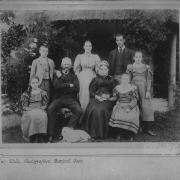





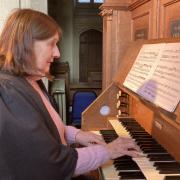

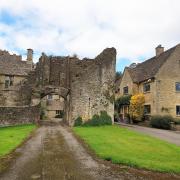

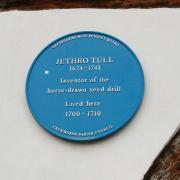

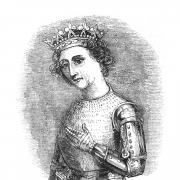

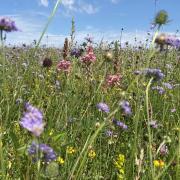
![Latenightpass with Gina Andrews [left] wins the Cross Country Chase at Cheltenham, December 15, 2023. Photo: Steve Davies/SDphotos.co.uk](/resources/images/128x89/1x/17621852.jpg)
![Latenightpass with Gina Andrews [left] wins the Cross Country Chase at Cheltenham, December 15, 2023. Photo: Steve Davies/SDphotos.co.uk](/resources/images/180x180/1x/17621852.jpg)

